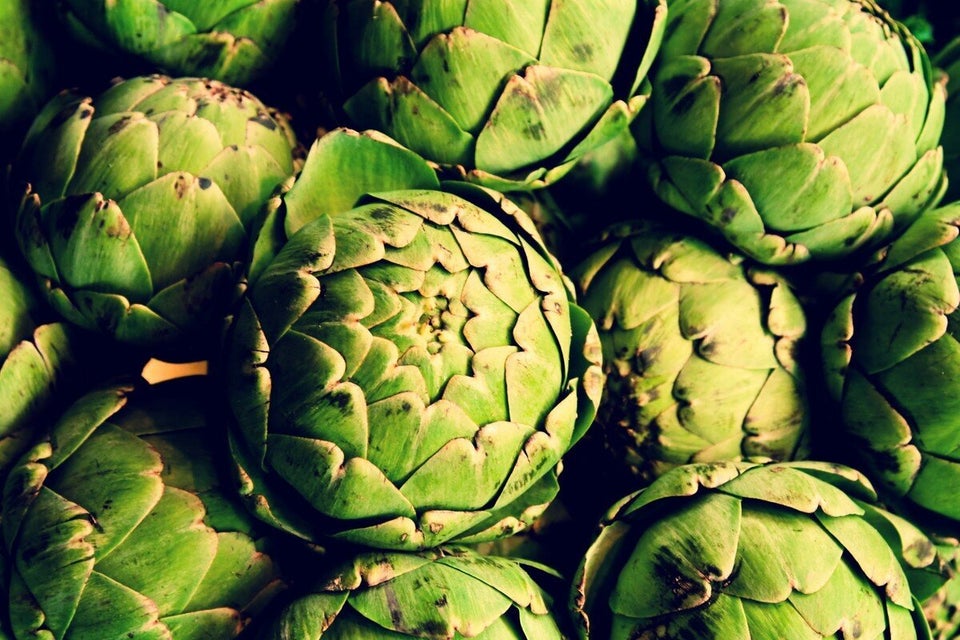With the warmer temperatures approaching, Canadians will once again look towards fresh fruits and vegetables to supplement their daily diets. But, over the last few years, enjoying raw food has come with the risk for infection. At one time, produce made up only a small portion of outbreak sources, with the majority coming from meat and dairy products. But that has changed and now a variety of fresh food products from contaminated apples to salads has appeared in the headlines.
While several reasons for the increase in plant-related troubles exist, one particular reason has escaped the public perspective. The problem, however, is one that may not be as easily resolved. It's because the culprit responsible for making us sick, is the same one that is needed to keep plants healthy.
It's wax.
Back in the late 1800s, food scientists came across a rather unusual discovery. When they examined the chemical nature of grapes, they found a protective substance on the surface. The same was seen on apples. After some further examination, the chemical was identified as wax. The finding opened the door to even more investigations into the reason behind this unexpected coating.
Over the coming century, waxes were found on numerous plants including many we regard as food. The reason behind this wax was also elucidated; it acted as a barrier against the elements. Each species had its own wax composition and structure within the protective layer of the cuticle. The differences allow for the plant to be able to adapt to varying environmental conditions and maintain integrity over time.
Wax also has the ability to protect the plant from pathogens. But to keep the insides safe, the wax is more than just a barrier. The chemical structure can help to inhibit microbial growth and in the case of fungi, germination. The wax may also be permeable to certain molecules allowing access to signalling molecules to alert the inside of an impending attack. It's not a perfect system however, as certain pathogens have figured out mechanisms to break down the wax and still gain access. Yet, for the most part, pathogens are kept on the outside.
While this may be good news for the plant, for those of us who intend on eating it, a problem becomes evident. If the pathogen sitting on the surface happens to also have the ability to infect humans, then the wax becomes a source of concern. Making this situation worse, in certain environmental settings, human pathogens with no appetite for plants may still find their way to the wax and eventually into us.
A perfect example of this is the dreaded norovirus. The only host for this virus happens to be humans yet, the pathogen is widespread in many environments including agricultural regions. When the virus happens to settle on a vegetable, such as lettuce, it can stick to the surface. Because the wax can keep a tight hold of the virus, the actions of harvesting, processing and packaging may not offer enough shear force to remove the pathogen from the surface. The overall result is an increased risk for infection as well as cross-contamination.
Even three gentle washes was simply not enough force to remove the virus.
The influence of wax on the transmission of foodborne illness has been examined albeit at a macroscopic level. This has led to a discussion over the benefit of dewaxing fruits and vegetables prior to consumption. Yet, the results have not been altogether harmonious as the process seems to help in some cases while worsen the situation in others. This suggests the need for a closer look at wax - at the molecular level - may allow us to better appreciate its role in food safety.
This was done in 2015, when an American group of researchers examined the impact of various molecular forms of wax on a foodborne pathogen. In this case, they chose rotavirus, which can be transferred to food through irrigation. The data showed the virus could easily attach to almost any form of salad vegetable. Even more surprising was the strength of adhesion to these waxes. Even three gentle washes was simply not enough force to remove the virus.
The results of the compilation of research reveal the best way to stay safe against foodborne pathogens in produce is to use warm to hot water and some manual scrubbing. The addition of wax-degrading materials such as vinegar or baking soda could also help even if they don't remove every single microbe. Detergent and bleach may be effective but they can leave residues. Once you have finished the washing, use a paper towel to pick up the droplets and create friction to remove even more microbes.
In light of all the unwelcome news, there is one dash of hope. Last month, the Canadian Food Inspection Agency published an examination of bacterial contamination of fresh fruits and vegetables sold in Canada. The researchers found the rate was quite low suggesting most of the raw produce that comes into the country is safe. Granted, this doesn't mean you can forego the rinsing and scrubbing. After all, while a study may offer a general trend, when it comes to foodborne infection, it's always best to act safely.
Follow HuffPost Canada Blogs on Facebook
ALSO ON HUFFPOST:
